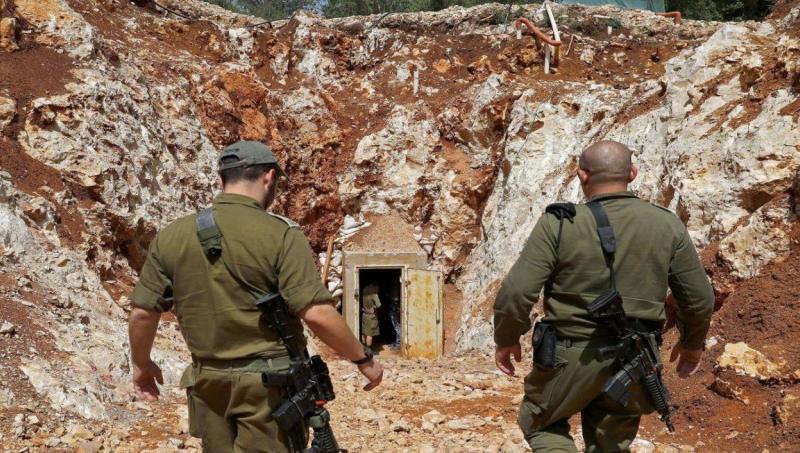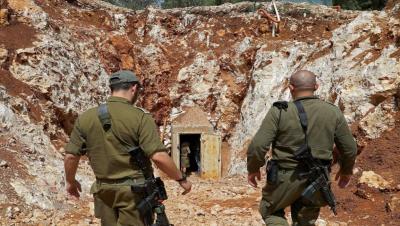Hezbollah is facing Israeli air superiority and technological capabilities by moving underground, where it has developed an extensive and complex network of tunnels in the south, the southern suburbs of Beirut, and the Bekaa Valley. It is believed that the party enhanced its tunnel network significantly since the 2006 war, making it more varied and extensive.
The ongoing conflict for nearly ten months between Hezbollah and the Israeli army on the southern Lebanese border has highlighted these tunnels, which are divided into three types. The first type is defensive tunnels that allow Hezbollah fighters to seek shelter from airstrikes. The second type is offensive tunnels, the last of which the Israeli army announced it had closed in 2019. The third type consists of small tunnels used to hide rocket launchers, as shown in a video released by Hezbollah's military media last month.
Israeli reports indicate that Hezbollah began its tunnel-digging policy in the 1980s and 1990s, though these tunnels were located away from the border with Israel. In 2006, Israeli media displayed a tunnel discovered by the Israeli army during the July 2006 war, located within Lebanese territory. Israeli officials claimed that construction work on Hezbollah's cross-border tunnels began before the onset of the Second Lebanon War in 2006.
Israel is concerned about offensive tunnels extending into its territory, which prompted it, in 2018, to launch a campaign to destroy these tunnels. In 2019, the Israeli army announced the completion of its operation to locate and destroy Hezbollah's cross-border offensive tunnels, confirming the discovery of at least six tunnels during the operation nicknamed "Northern Shield."
The last tunnel destroyed was approximately 800 meters long, with the Israeli army stating that it extended several meters into Israel and was dug 55 meters deep, making it the deepest tunnel uncovered and likely one of Hezbollah's most significant. This tunnel was equipped with electricity, a railway for transporting equipment and waste, and exit ladders, making it more advanced than other tunnels discovered.
In 2020, the Israeli Foreign Ministry, in coordination with the Israeli army, organized a field tour for twelve diplomats from Security Council member states along the northern border adjacent to Lebanon, which included an exploration of a Hezbollah tunnel discovered by the Israeli army.
However, the tunnels connected to the border with Israel are not the only ones that the Israeli army believes Hezbollah has constructed. In 2019, Israeli media reported that the army believed there were several tunnels that did not cross the border and requested the Lebanese government and army to destroy them.
Since the recent war began on October 8, Lebanese sources have confirmed that the Israeli army has used explosive and penetration bombs in an attempt to destroy suspected Hezbollah tunnels in the border area, with the vibrations from these bombs reaching approximately 25 kilometers.
A report from the "Alma - Israel Research Center" stated that after the 2006 Lebanon War, Hezbollah "established a defensive plan to counter any potential Israeli invasion, with dozens of operational centers equipped with local underground networks and tunnels." These tunnels serve as underground shelters from bombardment, allowing for military operations against Israel.
In addition to the previously mentioned types of tunnels, Hezbollah's media revealed a third type: rocket launch tunnels. Last month, the party's media presented a report on its artillery and missile capabilities, showcasing a rocket launcher emerging from underground to fire, indicating that the party conceals these platforms underground until ready to launch munitions.




